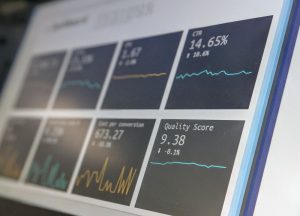To complement our series of QuickReads covering measurement, we will now explore Failure Demand (FD).…

Quick Glance Case Study: Lean Six Sigma Data Quality Review
“Involving everyone who ‘touched’ the process allowed us to quickly and easily identify unnecessary handoffs and duplication”
After completing a ChangeWise Lean Practitioner training course one candidate submitted the following work-place project to gain their qualification to LCS Level 1c.
The Business Challenge
Customer contacts are reported to an industry regulator as a business performance measure. These reports required complex manipulation, extraction and rework before being reported in differing formats to business stakeholders. Complications in data handling also occurred as a result of various team movements.

To ensure accurate, timely and meaningful data was available to support business needs, a full end-to-end review of the process was required.
Key people involved from client site
Representatives from each process step (anyone who ‘touched’ data used for creating regulator reports).
Lean Methodology Employed
DMAIC (Define, Measure, Analise, Improve, Control)
Focusing on Customer CTQ’s (Critical to Quality) requirements, the candidate completed a full Lean review of the end-to-end current state data in scope. Using the DMAIC process, various Lean methodologies were employed; 5 Principles of Lean, Voice of Customer, SIPOC, Value Stream Mapping, Value and Non-Value Add Analysis, 7 Wastes and 7 Service Wastes, FMEA and root cause analysis.
Key Current State Findings

Value add steps accounted for only 35% of the process
Area knowledge gaps caused significant rework
Outputs did not meet business needs
Numerous process constraints and duplication existed throughout the process
Folders and working documents held in various locations, resulting in unnecessary delays
No standardised process leading to inconsistent process steps
Unnecessary risk and duplication through the use if intermediate spreadsheets
Benefits and Outcomes
Using a Failure Mode and Effects Analysis derived solutions where risks were significantly reduced/eliminated. This also included:
- Simplification (standardised practises and processes)
- Elimination (removal of non-value-add steps)
- Combining (creation of a single data set for all stakeholders)
- Reduction (less movement of information and manipulation)
- Automation (automation of data manipulation and extracts)
Control measures introduced:
- Clearly documented instructions for data creation and use
- Introduction of a monthly QC process step
- 5S (folders clearly labelled and organised, single source for location and retrieval of data)

These improvements significantly condensed the number of hand-offs and handlers, which in turn, reduced the time taken to create reports. The need for regular back-end/fixes was eradicated, further eliminating the opportunity for risk and error, ensuring the outputs were value-add and aligned with business requirements. Reporting outputs were increased and stakeholder confidence restored, ensuring regulator data requirements could be consistently met and easy to retrieve.
If you are interested in learning how to review your own business data/reporting in order to create an efficient waste free process, ensure stakeholder needs are quickly and easily met, and eliminate unnecessary risk, contact us at info@changewise.co.uk
ChangeWise believes employee engagement is the foundation for successful Change. Training and coaching your people to use simple continuous improvement techniques will enable your organisation to continuously adapt and stay ahead in a constantly changing and challenging environment.
For updates and interesting Lean Change insights, connect with us on LinkedIn.
Find out more about our Public Training Courses



